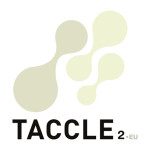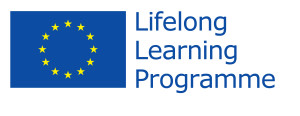LEARNING OBJECTIVES
At the end of the chapter you will be able to:
- Explain the terms RSS and newsfeed
- Describe how they are used
- Install and use an RSS reader
- Use newsfeeds on your own site
WHAT IS A NEWSFEED?
News feeds allow you to see when websites have added new content. You can get the latest updates in one place, as soon as they are published, without having to visit the websites you have taken the feed from.
Feeds are also known as RSS. There is some discussion as to what RSS stands for, but most people settle for ‘Really Simple Syndication’ or ‘Rich Site Summary’. Either way, RSS is a format for delivering regularly changing web con- tent. Many news-related sites, weblogs and other online publishers syndicate their content as an RSS feed to who- ever wants it. In essence, the feeds themselves are just web pages, designed to be read by computers rather than people.
READING AN RSS FEED
In order to read an RSS feed you will need an RSS reader, also called a Feed Reader or News Aggregator or a Newsreader This is a piece of software that checks the feeds from sites you have subscribed to and tells you that new articles have been added or changes made. It downloads any updates that it finds and provides a user interface to monitor and read the feeds.
There is a range of different news readers available and new versions are appearing all the time. Basically there are two types of RSS reader, those that are accessed using a browser, and those which are downloadable applications. Browser-based news readers let you catch up with your RSS feed subscriptions from any computer, whereas downloadable applications let you store them on your own computer (in the same way that you either download your e-mail using Outlook or Mail or keep it on a web-based service like Hotmail). Also, different news readers work on different operating systems, so you will need to choose one that will work with your computer.
Some popular feed readers include:
Windows
- NewzCrawler
- FeedDemon
- Awasu
- FeedReader
- NewsGator (integrates with Outlook)
MacOSX
- Newsfire
- NetNewsWire
Cross platform
- Amphetadesk (Windows, Linux, Mac)
Web based
- Bloglines
- Feedly
- FeedZilla
- NewsGator
- Microsoft Live
- My Yahoo!
- The Old Reader
Browser based
- Mozilla Firefox
To find out more and to download a reader just Google their names and follow the instructions on the site.
Readers are free but that means they are sponsored by someone. This often takes the form of Readers being pre- loaded with the feeds from particular sites. Some of these are quite useful – like national or international news sites. Others you may prefer to do without. However, some cannot be deleted so you may find that in the middle of your list of feeds you have an annoying update on ski resorts or soaps you don’t watch.
GETTING STARTED
Once you have your Feed Reader, it is a matter of finding sites that syndicate content and adding their RSS feed to the list of feeds your Feed Reader checks. Many sites display a small orange icon with white radiowaves in it to let you know a feed is available or just use an icon with the acronyms RSS, XML or RDF. You can subscribe to a feed by clicking on a + or ‘add’ button in the reader and dragging or cutting and pasting the URL of the site you want to monitor into your news reader.
Some browsers, including Firefox, Opera and Safari, automatically check for feeds for you when you visit a website, and display an icon when they find one. This can make subscribing to feeds much easier. Check their websites for more details.
BENEFITS AND REASONS FOR USING RSS
RSS solves a problem for people who regularly use the web. It allows you to stay informed easily by retrieving the latest content from the sites you are interested in. You save time by not needing to visit each site individually. It is re- ally useful for those sites that update regularly such as news sites or blogs. The number of sites offering RSS feeds is growing rapidly. You also ensure your privacy by not needing to join each site’s email newsletter.
It may be that people just do not want to be updated every minute of every day when there is something new to read. That could lead to information overload. However as someone said “It redefines information overload and moves the bar higher. Now it takes more information for you to be overloaded. It just means you can consume 100 times more before you go crazy[1]”.
USING RSS FEEDS IN THE CLASSROOM
RSS feeds are a good way of sharing your workload with your students. They will all have access to a computer, at least in school. Make sure that they have an RSS reader then make a list of useful sites and distribute the job of monitoring updates around the class. (Swap around regularly as some sites are more boring than others.) For example, the New Scientist site is excellent and has a list of different feeds to choose from according to topic or subject area. Science teachers could appoint ‘monitors’ for the ones that are relevant and ask them to report back to the class.
Or you could do this as a class activity at a regular time each week. Using a projector, flick through the updates for that week and stop and talk about the ones that are interesting.
If, during their research for assignments, students find useful sites that syndicate content, ask them to indicate this in their bibliography by putting an ‘RSS’ against it. Similarly, if you have got students sharing bookmarks, this could be put in the notes.
Set homework assignments such as ‘what is the latest research /news on…’ Pupils love being first with the news, especially if they can tell you something you don’t know.
If you have a school website or a class wiki or an interesting voicethread or any other web based presence discuss with your pupils whether it should be syndicated and add an RSS feed.
ASSIGNMENTS
- Add an RSS reader to your toolkit – either download one or sign up for a web based version.
- Add at least five feeds to it relating to your personal interests and your teaching.
- Monitor these feeds everyday for a week. Find out which ones are the most active.
- Decide on one feed you would like your class to monitor and report on.
- Add the TACCLE2 website to your list of feeds and, if you are interested in e-learning in general, add Pontydysgu.org which is the website of the Welsh partner.
Resources and reference material
BBC News (2005) ‚‘Turning the web into sushi belts‘ (WWW). BBC News: http://news.bbc.co.uk/1/hi/technology/4421707.stm (19.05.09)
Wikipedia (2009),‘RSS‘ (WWW). Wikimedia Foundation, Inc.: http://en.wikipedia.org/wiki/RSS_(file_format) (19.05.09)
BBC News (s.d.),’News Feeds from the BBC’ (WWW). BBC News: http://news.bbc.co.uk/1/hi/help/3223484.stm (19.05.09)
A short video explanation of RSS and how it helps you save time reading the web:
Commoncraft (2007),’RSS in Plain English’ (WWW). YouTube, LLC: www.youtube.com/watch?v=0klgLsSxGsU&eurl=http://www.commoncraft.com/rss_plain_english (10.03.2009)




 English
English Nederlands
Nederlands Deutsch
Deutsch Italiano
Italiano Español
Español Português
Português Română
Română Cymraeg
Cymraeg
No comments yet.